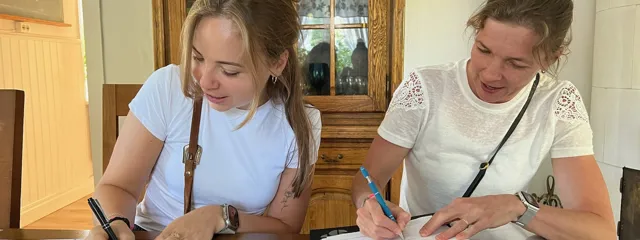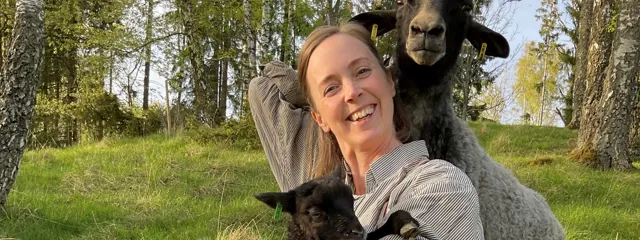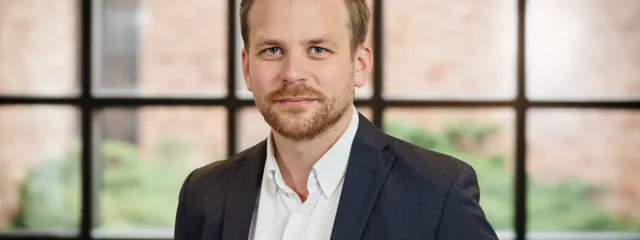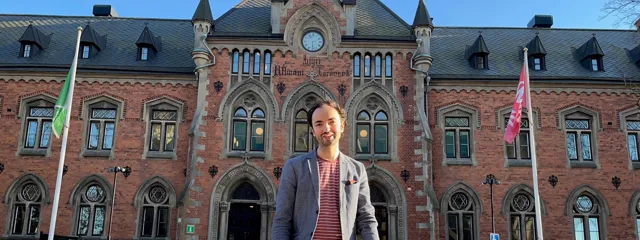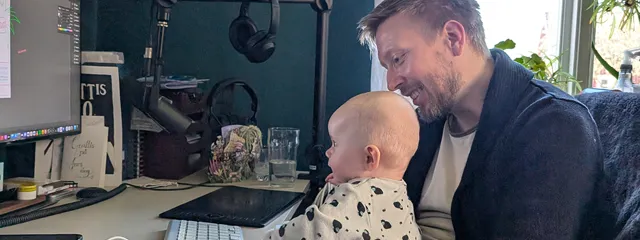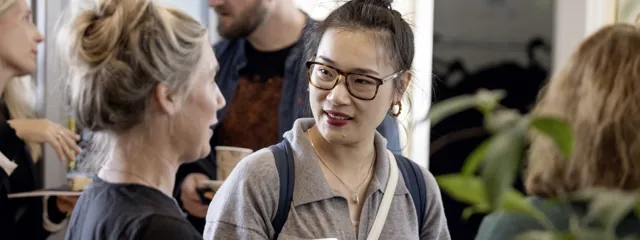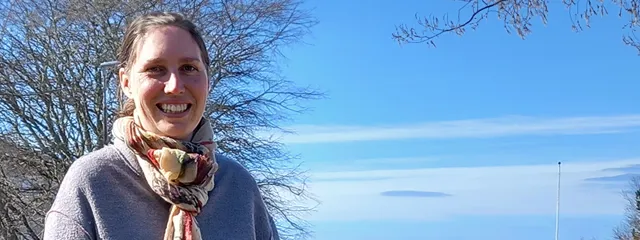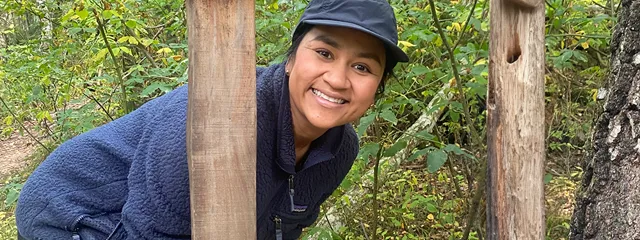From a dig in Sicily to a job in a Skara museum
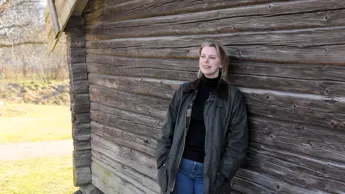
When Emelie Byström tired of city life and her research position in Uppsala, she switched it for something completely different. Today she lives on a farm in the country and is a program producer at the Västergötlands Museum in Skara, where she can put her creativity and knowledge of history to full use.
- Who?
Emelie Byström
- What?
Archaeologist who exchanged excavations for a job at Västergötland Museum and the city for the countryside.
Emelie has always been interested in history. She grew up in the southern Swedish town of Eslöv before moving first to Stockholm and then to Uppsala to study the culture and social life of antiquity.
“I held a PhD position in Uppsala and during my time there I took part in several digs around Europe, including Sicily and Athens. It was a glorious time in my life, but after four years I knew I was done working in research; it was time to try something new.”
And just when Emelie began pondering whether it was time to try something else, her other half got a job in Gothenburg.
“My partner – an archaeologist – hails from the Netherlands. We met during a dig in Greece. When he began work at the University of Gothenburg, Uppsala felt so very far away. Also, I longed to move out into the country.”
The couple found their dream home just outside Skaraborg, in the neighboring municipality of Vårgårda between Skara and Gothenburg, It was an old country house where their interest in building conservation would be more than useful. At the same time, Emelie got the job as a program producer at the museum in Skara.
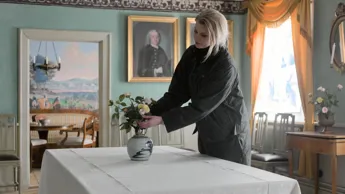
“So much history!”
Although Emelie had studied history for many years, she was surprised by how many historical places Skaraborg is home to.
“There’s just so much history here! As soon as I began working at the museum I realized just how much there was – it was love at first sight!”
In addition to her amazement at the region’s abundance of historical remains in both town and country, Emelie experienced a growing interest in the history of her new down-home region.
“People here are proud of where they live. There are not only scholarly, professional archaeologists, researchers and historians, but also a very knowledgeable general public. I was pleasantly surprised to find that so many people are interested and happy to share their knowledge.”
People here are proud of where they live. There are not only scholarly, professional archaeologists, researchers and historians, but also a very knowledgeable general public.
As a program producer at the museum, Emelie plans and produces the outreach activities, such as lectures and other events. Emilie’s working days are varied and she handles events both large and small for different target groups.
“It’s very, very rewarding, socially engaging and creative! I draw great benefit from my qualifications in history, but planning things here requires me to be in contact with many different cultural creators, which means I’m constantly learning new things.”
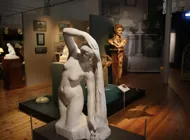
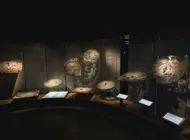
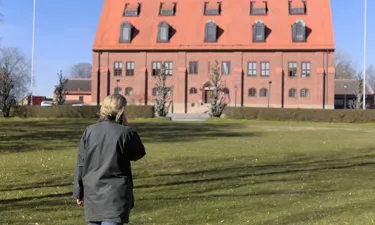
Curious about Skaraborg? Subscribe to our newsletter!
Our newsletter is filled with information about people in Skaraborg. Here, you can find tips on major employers, upcoming events, and more.
Newsletter
Many museums in collaboration
Emelie tells us there are plenty of local museums in Skaraborg and that collaboration between them is constantly on the increase. While Västergötlands Museum is a regional museum, the local museums focus on their respective municipalities.
“We have a lot of joint initiatives and we cooperate when school is out so that our activities for children and young people reinforce each other and do not clash timewise. We’ve just received project support to develop an initiative for a history week in Skaraborg when we’ll be hosting loads of different events. I’m project manager for the initiative, so keep August 11–17 free!”
Naturally, all of Skaraborg’s museums’ target groups are important, but children especially so. Emelie tells us that in addition to the open activities that they are happy to arrange on weekends and school vacations, Västergötlands Museum invites all of Skara’s year 1 pupils to experience, for a full day, what it was like to live in the 1800s.
“They’ll get to visit cottages that date back from then, and they’ll be greeted by me and my colleague, both of us dressed in period clothes. The children also get to dress up a bit, and then we’ll show them how things were done back in the good old days. The day is usually greatly appreciated by the children and is naturally great fun for us, too!”
Emelie’s favorite haunts in Skaraborg
- Västergötlands Museum; OK so I’m biased, but there’s so much to see here! We have Sweden’s third largest artifact repository, which we’re very proud of. The Fröslunda Shields are a major highlight; they are utterly unique and have an exciting history. We’re currently studying them anew, using modern methods. Getting to know more about their history will be exciting.
- Skaraborg’s countryside and nature. This may seem a bit vague, but that’s because there’s so much to see. Choose any hiking trail you like. There are loads of beautiful walking trails in e.g. Varnhem, and there are historical remains absolutely everywhere! Much of it is very well managed; for example, there are signs describing what can be seen in the immediate surroundings.
- If you’re interested in conserving old things or eager to hear history whispering to you, then visit one of our fantastic restoration hardware stores. Lin & Lera in Larv is a good example with both a shop and course center run by supremely knowledgeable people. There are plenty of equally knowledgeable people to ask for help about old buildings everywhere in Skaraborg. It’s how we keep history alive!”
- Do you like pizza too? The pizzas Nosse Kvarn in Nossebro serves on weekends taste just like pizzas from Naples! I’ve eaten a lot of good pizza, and the ones here are top class. Really delicious!


